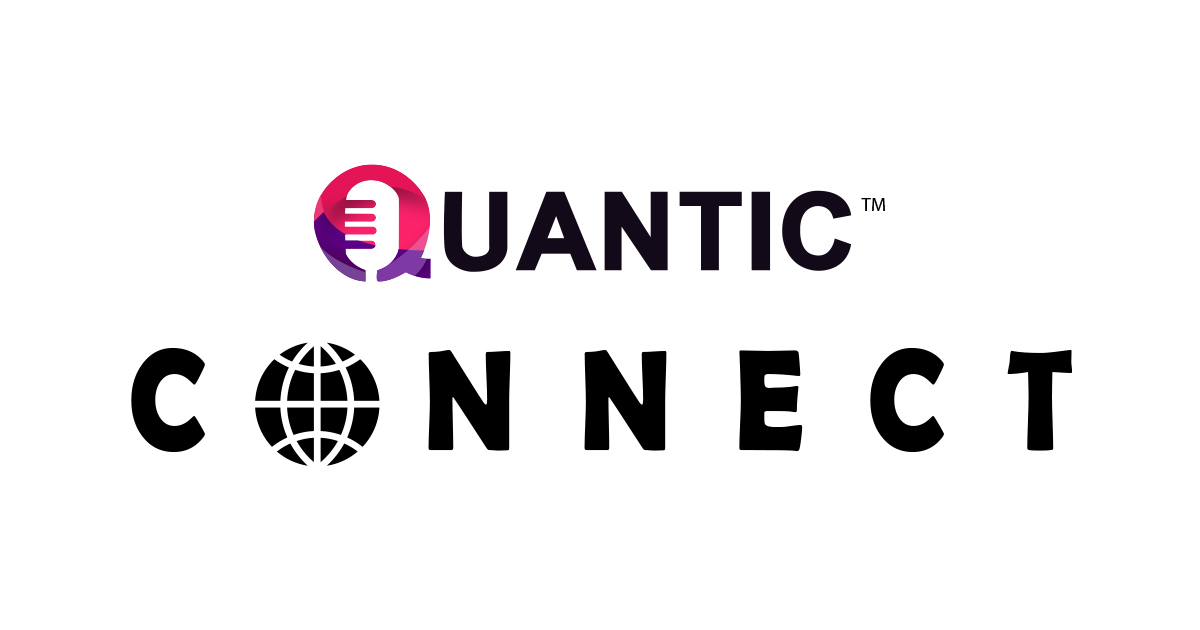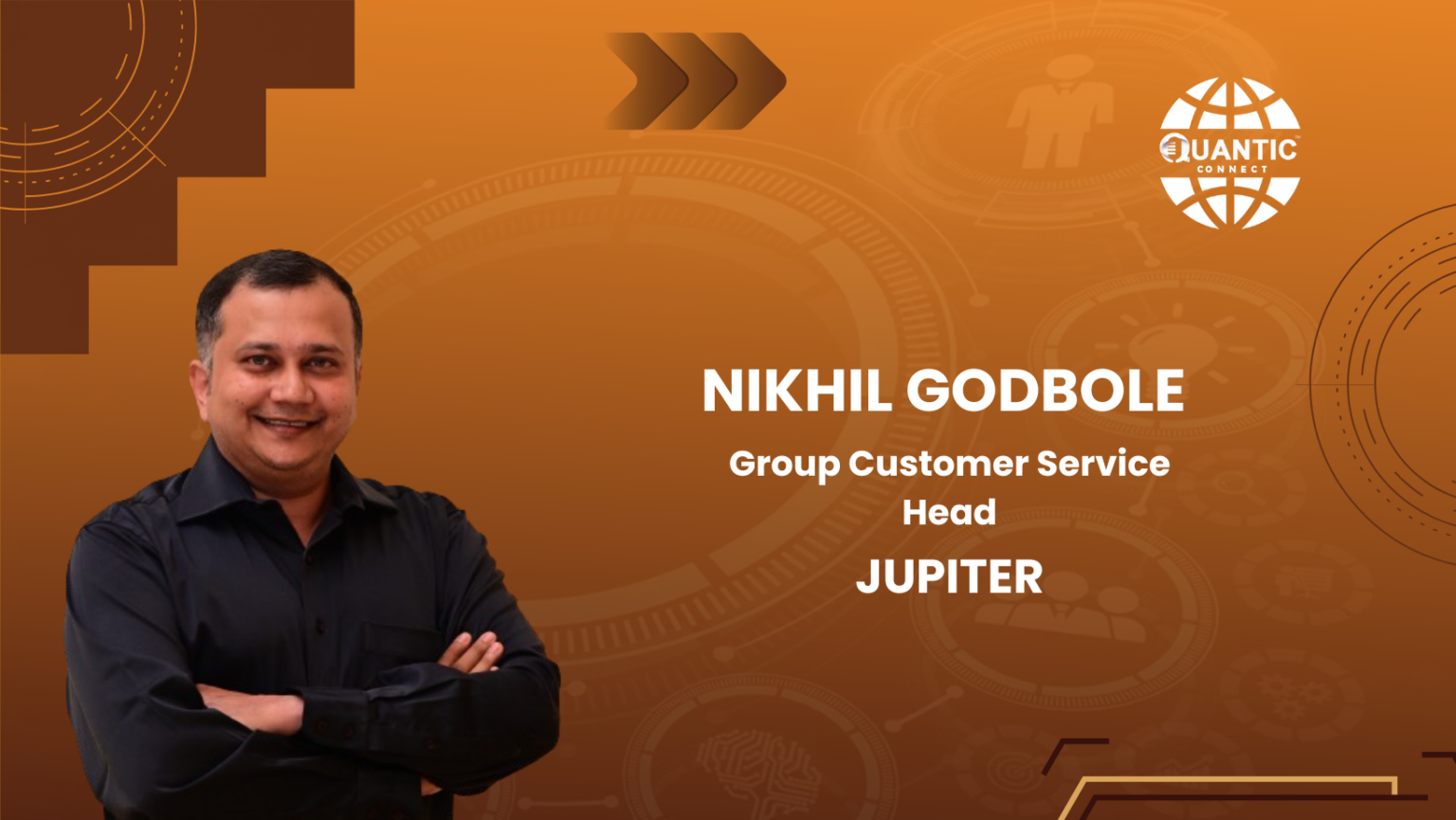Mumbai, 14th May: Navigating the dynamic landscape of the customer experience industry demands a constant pulse on evolving consumer expectations and technological advancements. In an era marked by digital disruption and shifting market dynamics, staying relevant is paramount for businesses striving to thrive amidst fierce competition. For veterans and newcomers alike, adapting to changes in customer experience paradigms is not merely a choice but a strategic imperative. In this article, we delve into the strategies and insights, exploring how they keep abreast of emerging trends, strike a balance between internal objectives and external demands, and foster a culture of excellence in problem-solving and leadership
Join Mr. Nikhil Godbole, Group Customer Service Head, at Jupiter, in conversation with Mr. Marquis Fernandes, who spearheads the India Business at Quantic India, as they highlight the importance of staying updated on industry trends, balancing internal goals with external expectations, prioritizing customer issue resolution, fostering a high-performing culture, and embracing innovation while delegating responsibilities effectively in leadership.
Mr. Nikhil Godbole serves as the Group Head of Customer Service at Jupiter.money, a prominent digital money management platform in India. With extensive experience spanning over 2 decades in customer relations and service management, Nikhil plays a pivotal role in ensuring exceptional customer experiences across all touch points. Prior to joining Jupiter.money, Nikhil held leadership positions in customer service departments of renowned Travel Tech Company Cleartip.com, where he demonstrated his knack for implementing strategies to enhance customer satisfaction and loyalty. His expertise in understanding customer needs and driving operational excellence has been instrumental in Jupiter money’s commitment to delivering top-notch service to its users.
How do you stay updated with industry trends and adapt to changes in the Customer experience domain?
I’ve been associated with the Service Industry for over 2 decades and one thing which has changed massively, is the expectation of Consumers from the brand. Especially, when a new brand enters the domain wherein things are already established, consumers look for more innovations which the brand can bring in and the customer experience which they can provide. With the onset of digitization across the banking world which resulted into the birth of many fintechs in the past decade, it is now even more challenging to keep ourselves relevant within the highly regulated platform of the Central Bank.
Personally I prefer to stay updated by subscribing to Indian fintech publications and newsletters such as Your Story Fintech, Inc42 and BloombergQuint which provide valuable insights into local market dynamics, regulatory changes, and emerging trends specific to India’s fintech landscape.
Actively participating in industry-specific events and conferences like India Global Fintech Fest, Fintegrate Zone, and Fintech India Expo facilitates networking opportunities with industry leaders and exposure to cutting-edge innovations shaping the Indian fintech ecosystem.
One needs to be in constant touch with the technology vendors in order to understand who is doing what in the industry and inculcate a culture of best practice sharing with industry peers. It helps to be updated and insulates from being redundant as long as the learning and application continues.
How do you strike a balance between achieving internal goals and meeting external expectations?
We are in the business of enabling our customers to manage their money efficiently and having said that, it is imperative that we also keep the lights running with a steady revenue ensuring that we can serve our customers for a longer period of time. As much as there is a constant need of delivering new features and products from the external customers, prioritizing the internal goals which are usually tied up with Build Vs Buy, Cost benefit analysis, No of issues, monetary vs nonmonetary impact needs to be well aligned across the functions to arrive at a scalable operations.
There is a huge Product & Engineering focus internally on getting the brilliant basics right and focus on a few big bets every quarter and that helps to balance and achieve internal goals and meet external expectations. We follow a democratic way of functioning internally which helps everyone to give their opinion on what to push, when to push to the external world, also keeping in mind the revenue goal which is a non-negotiable factor in our business.
In your opinion, what are the key factors that contribute to a successful resolution when dealing with customer issues, especially in critical departments?
Customer Experience is all about doing things right the first time. IT (Product has to work), if it doesn’t and the customer has to reach out to us, do your best to provide him/her with all the solutions with conversational bots and if nothing works, get him connected to a human being asap without any hassles.
Constant review of performance metrics is very critical when there are multi modular processes running across multiple channels. It helps to understand the gaps in the processes and enables the process excellence team to bridge them before it hits the roof.
What accomplishments do you hold in highest esteem, and what lessons have you learned along the way that have shaped your approach to leadership and problem-solving?
Building a high performing culture within the organization is of utmost importance. A company is only successful when the employees working in that company are successful. And in order for the employees to be successful, they have to be enabled at all levels to make decisions in the interest of the customer keeping in mind the company goals. Enough and more platforms should be created for cross functional teams to raise issues and seek solutions from their counterparts.
One has to believe in his own product for it to make it successful. History has shown that most of the battles were lost because the commanders didn’t believe in their army’s capabilities. Having a right leader saves a lot of time in building a high performance culture and the team’s confidence in delivering ambitious goals. Companies should focus on hiring the right leaders with the right background and culture who can help accelerate the positive cultural growth within the teams resulting in better & predictable deliverables.
Leaders should not shy away from exploring new age tools in conventional processes as that can be a detractor in growth of the company and its employees. At the same time, leaders are not responsible to solve everything on their own every time, they need to be open to delegate certain responsibilities to whom they believe can do a good / better job than them and free themselves to think about the next big thing within their domain.
With experience comes maturity and with maturity comes ability to predict things from going right or wrong and when, however, at times, it results in leaders taking a safer path in order to ensure that they can control the outcome. This approach is not wrong, but at times, hampers the fast growth of companies which are ambitious and becomes difficult to arrive at the right balance to take the company to the next level.
Problem solving may not come naturally to everyone, but, a good leader can inculcate his learnings with his team in developing the right skill sets which can help build a problem solving culture with specific output resulting in betterment of the company and its employees.
To know more about us / publish your article, reach us at
www.quanticindia.com
marquis@quanticindia.com.



